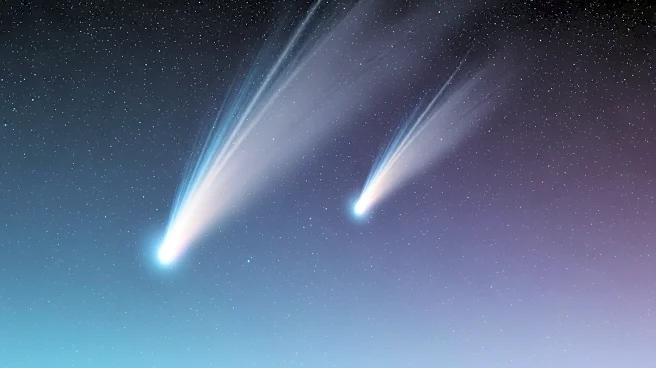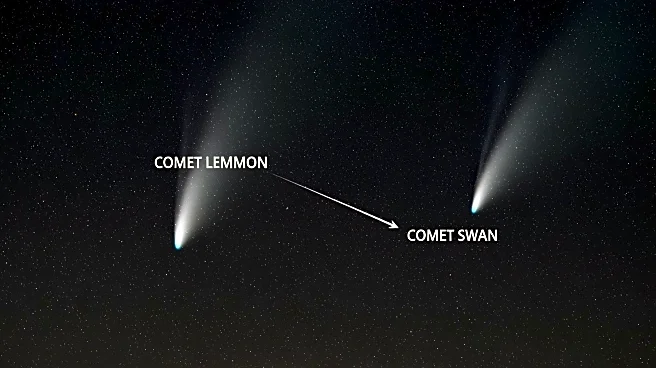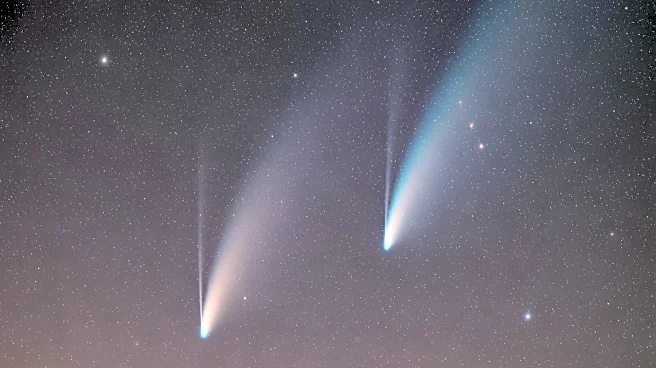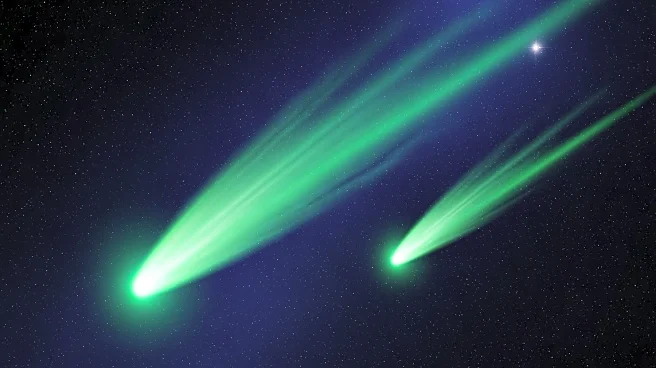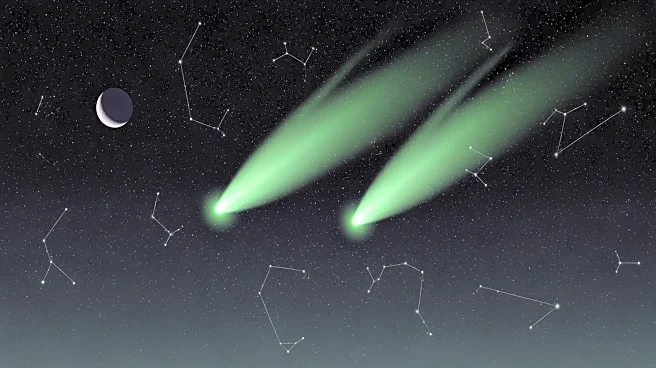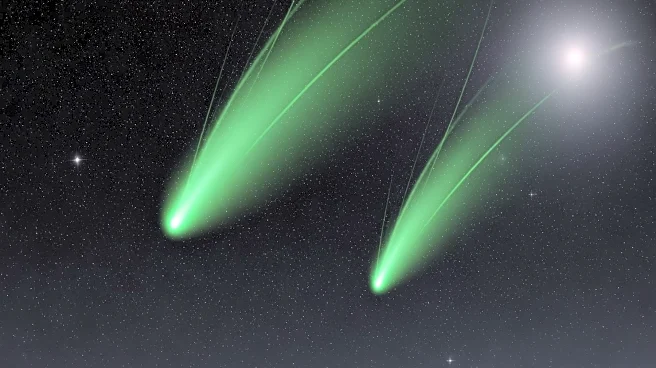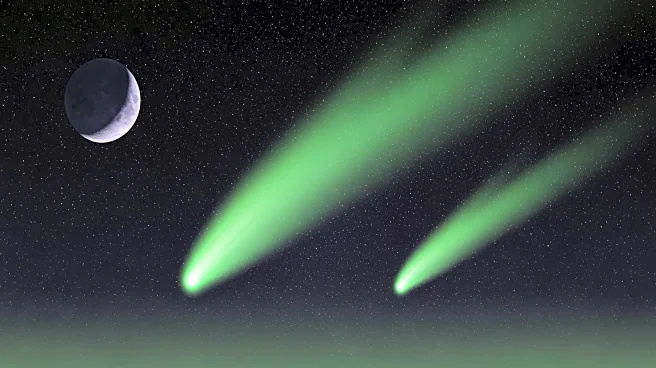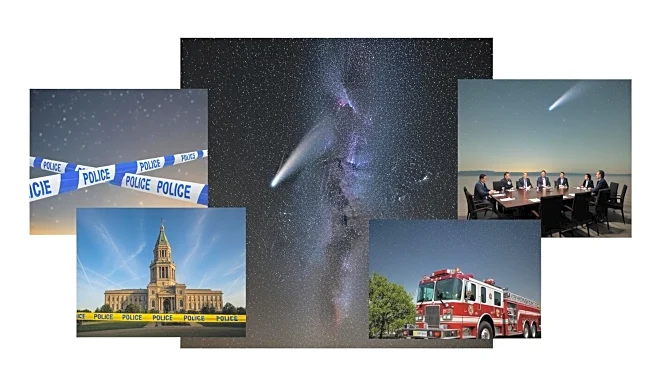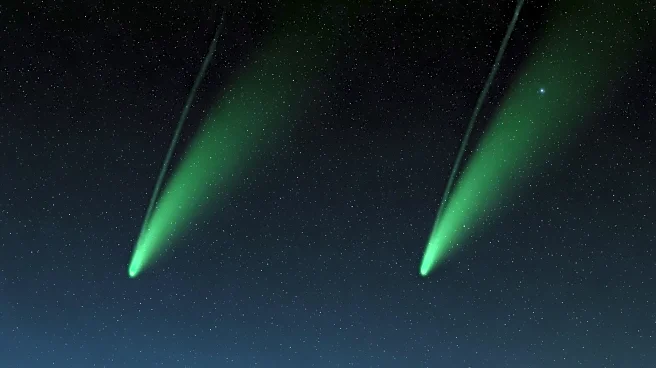What's Happening?
Comet C/2025 A6 (Lemmon) and Comet C/2025 R2 (SWAN) are set to reach their closest points to Earth this week, providing a rare opportunity for skywatchers. Comet Lemmon will be closest on October 21, while
Comet SWAN will reach its nearest point on October 20. Both comets are visible in the night sky, with Comet Lemmon shining at a magnitude of 4.5, making it visible to the naked eye under dark skies. Comet SWAN, however, is dimmer at magnitude 5.9 and may require binoculars for viewing. The best time to observe these celestial events is about an hour and a half after sunset. Comet Lemmon can be found near the Big Dipper and Arcturus in the northwest sky, while Comet SWAN is located near the Summer Triangle in the southwest.
Why It's Important?
The simultaneous visibility of two comets is a rare astronomical event, offering a unique opportunity for both amateur and professional astronomers to observe and study these celestial bodies. The brightness of Comet Lemmon, in particular, makes it accessible to a wider audience, potentially sparking interest in astronomy and space science. This event also provides valuable data for scientists studying the composition and behavior of comets, which can offer insights into the early solar system. The public's engagement with such events can enhance awareness and appreciation of space exploration and science.
What's Next?
As Comet Lemmon continues its journey, it will loop around the sun on November 8, completing its 1,350-year orbit. The next opportunity to observe Comet Lemmon will not occur until 3179, due to changes in its orbital period caused by Jupiter's gravitational influence. Meanwhile, Comet SWAN will continue its path, offering further observation opportunities for those equipped with the right tools. Astronomers and enthusiasts are likely to continue monitoring these comets, capturing images and data that could contribute to ongoing research in cometary science.
Beyond the Headlines
The appearance of these comets highlights the dynamic nature of our solar system and the influence of gravitational forces on celestial bodies. The shortening of Comet Lemmon's orbit due to Jupiter's gravitational pull is a reminder of the complex interactions that govern the movement of objects in space. This event also underscores the importance of public engagement in science, as such celestial phenomena can inspire future generations of scientists and foster a greater understanding of our place in the universe.
